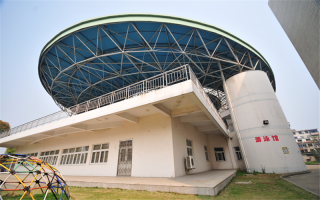初中英语基本知识点总结梳理

中考英语
2022/2/6
这篇文章小编给大家总结归纳了初中英语基本语法知识点,希望对同学们学习英语有帮助。

1.当there be 句型的主语是一系列事物时,谓语应与最邻近的主语保持一致。
There is a pen, a knife and several books on the desk..
There are twenty boy-students and twenty-three girl-students in the class.
2.当either… or… 与neither… nor,连接两个主语时,谓语动词与最邻近的主语保持一致。 如果句子是由here, there引导,而主语又不止一个时,谓语通常也和最邻近的主语一致。
Either you or she is to go.
Here is a pen, a few envelops and some paper for you.
“疑问词+不定式”结构1.该结构的句法功能
“wh-词+不定式”主要用作宾语:
We must think what to do. 我们必须考虑怎么办。
I can’t decide whom to invite. 我不能决定该邀请谁。
He had no idea of how to do it. 他不知道如何做此事。
除用作宾语外,还可用作主语、表语等:
When to leave has not been decided. 何时离开还没有决定。
The question is how to find him. 问题是如何找到他。
2.why用于该结构的注意点
原则上说,why 后不接不定式,不过若不定式不带 to,则可用 why:
Why not go there at once? 为什么不马上去那儿呢?
Why argue with her? 为什么要跟她争论呢?
【注】这类结构通常只用于谈论现在和将来,不用于谈论过去:
误:Why not clean the room yesterday?
正:Why didn’t you clean the room yesterday? 你昨天为什么不打扫房间?
3.how用于该结构的注意点
有些动词后接“how+不定式”作宾语时,how可省略:
Did you learn (how) to drive a car? 你学过开车吗?
但是,有些动词后面接“疑问词how+不定式”作宾语时,尽管其中的how在汉语中无需译出,但却不能将 how 省略:
He knows how to play the piano. 他会弹钢琴。
He showed her how to swim. 他教她游泳。
Soon you’ll find out how to drive a car. 不久你就会学会开车的。
We never discovered how to open the box. 我们一直未发现如何打开这个盒子。
Can you explain how to make a cake? 你可以给我解释一下怎么做蛋糕吗?
一般现在时1. 概念:经常、反复发生的动作或行为及现在的某种状况。
2. 基本结构:①is/am/are;②do/does
否定形式:①am/is/are+not;②此时态的谓语动词若为行为动词,则在其前加don't,如主语为第三人称单数,则用doesn't,同时还原行为动词。
3. 一般疑问句:①把is/am/are动词放于句首;②用助动词do提问,如主语为第三人称单数,则用does,同时,还原行为动词。
4. 用法
1) 经常性或习惯性的动作,常与表示频度的时间状语连用。
例如:I leave home for school at 7 every morning. 每天早上我七点离开家。
2) 客观真理,客观存在,科学事实。
例如:The earth moves around the sun. 地球绕太阳转动。
Shanghai lies in the east ofChina. 上海位于中国东部。
3) 表示格言或警句。
例如:Pride goes before a fall. 骄者必败。
注意:此用法如果出现在宾语从句中,即使主句是过去时,从句谓语也要用一般现在时。
例如:Columbus proved that the earth is round. 哥伦布证实了地球是圆的。
4) 现在时刻的状态、能力、性格、个性。
例如:I don't want so much. 我不要那么多。
Ann writes good English but does not speak well.安英语写得不错,讲的可不行。
5) 一般现在时表示将来含义
a. 下列动词come, go, arrive, leave, start, begin, return的一般现在时可以表示将来,主要用来表示在时间上已确定或安排好的事情。
例如:The train leaves at six tomorrow morning. 火车明天上午六点开。
When does the bus star? It stars in ten minutes. 汽车什么时候开?十分钟后。
b. 在时间或条件句中。
例如:When Bill comes (不是will come), ask him to wait for me. 比尔来后,让他等我。
I'll write to you as soon as I arrive there. 我到了那里,就写信给你。
陈述句1.陈述句是指陈述一个事实或者说话人的看法的句型。陈述句又分为肯定的陈述句和否定的陈述句,简称为肯定句和否定句。
2.肯定句
(1)Thisisabook.
(2)Helooksveryyoung.
3.否定句
(1)Thesearen’ttheirbooks.
(2)Theydon’tlooknice.
(四)陈述句的五种基本句型
(1)主语+连系动词+表语
(2)主语+谓语(不及物动词)
(3)主语+谓语(及物动词)+宾语
(4)主语+谓语(及物动词)+间接宾语+直接宾语
(5)主语+谓语(及物动词)v.+宾语+宾语补足语







.jpg)

.jpg)
.jpg)
.jpg)
.jpg)

















